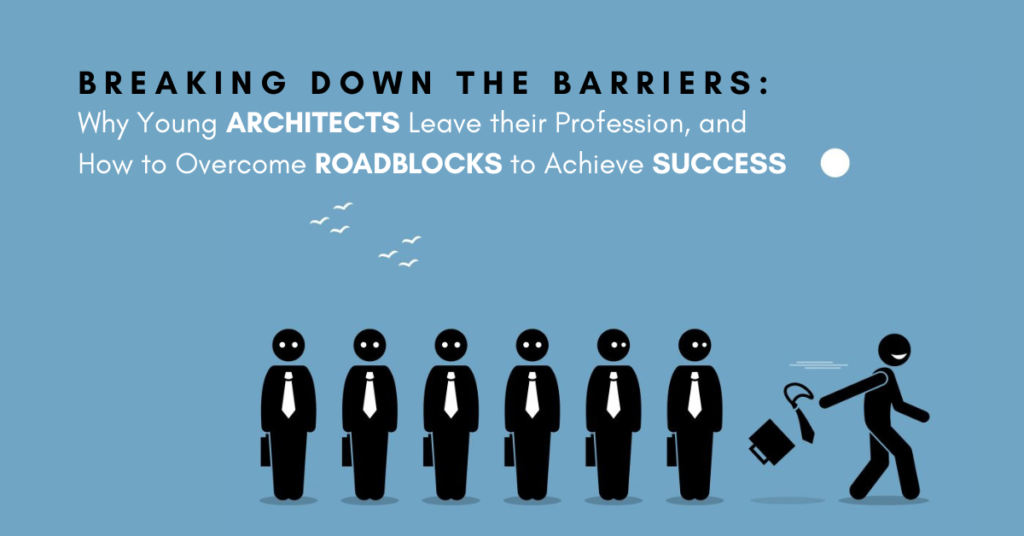Architecture is often seen as a prestigious and creative career, but many architects eventually leave the profession due to various challenges. From long working hours to financial instability, the field presents numerous obstacles that drive talented individuals away. This article explores the key reasons why architects quit, providing insights into the industry’s struggles and potential solutions.
A. Long Working Hours and Burnout
One of the most common reasons architects leave the profession is the grueling work schedule. Unlike many other careers, architecture demands extensive overtime, often without additional pay.
1. Unrealistic Deadlines
Architects frequently face tight deadlines due to client demands, construction schedules, and project complexities. This leads to:
-
Excessive overtime
-
High stress levels
-
Reduced work-life balance
2. Lack of Compensation for Extra Hours
Many firms do not offer overtime pay, leaving architects feeling undervalued despite their hard work.
3. Mental and Physical Exhaustion
The constant pressure leads to burnout, causing many to reconsider their career choice.
B. Financial Instability and Low Pay
Despite the extensive education and skills required, architects often earn less than professionals in similar fields.
1. High Student Debt vs. Low Starting Salaries
-
Architecture degrees are expensive, yet entry-level salaries are modest.
-
Many struggle to pay off student loans while managing living expenses.
2. Profit Margins in Firms Are Slim
Small and mid-sized firms often operate on tight budgets, limiting salary growth.
3. Freelancing Challenges
Independent architects face inconsistent income, making financial stability difficult.
C. Lack of Creative Freedom
Many architects enter the field expecting artistic expression but find themselves constrained by:
1. Client Demands
Clients often prioritize budget and functionality over innovative design.
2. Strict Regulations and Codes
Building codes and zoning laws restrict creative possibilities.
3. Corporate Firm Structures
Large firms may assign repetitive tasks, limiting design involvement.
D. High Responsibility with Legal Risks
Architects bear significant legal and safety responsibilities, which can be overwhelming.
1. Liability for Design Flaws
If a building fails, architects may face lawsuits.
2. Stress Over Safety Compliance
Ensuring structures meet safety standards adds pressure.
3. Insurance Costs
Professional liability insurance is expensive, especially for independent architects.
E. Technological Changes and Adaptation Stress
The industry constantly evolves, requiring architects to stay updated with new tools.
1. Software Learning Curve
Programs like Revit, AutoCAD, and BIM require ongoing training.
2. Automation Concerns
Some fear AI and automation may reduce job opportunities.
3. Keeping Up with Trends
Sustainable design and smart buildings demand continuous education.
F. Job Market Competition and Saturation
The architecture field is highly competitive, with more graduates than available jobs.
1. Limited Positions in Top Firms
Only a few secure roles in prestigious companies.
2. Global Competition
Outsourcing and international talent increase job scarcity.
3. Need for Specialization
Generalists struggle, while niche experts fare better.
G. Work-Life Imbalance and Personal Sacrifices
The profession often requires personal sacrifices that affect relationships and health.
1. Missed Family Events
Late-night work sessions lead to missed personal time.
2. Health Issues from Stress
Chronic stress contributes to mental and physical health problems.
3. Difficulty Maintaining Hobbies
The demanding schedule leaves little room for personal interests.
H. Alternative Career Opportunities
Many architects transition to related fields with better conditions.
1. Switching to UX/UI Design
Tech industries offer higher pay and flexible hours.
2. Moving into Real Estate Development
Greater financial rewards with less design stress.
3. Teaching and Academia
Some find fulfillment in educating future architects.
Conclusion
While architecture is a respected profession, the challenges—including long hours, financial strain, and limited creativity—drive many to leave. Addressing these issues through better pay, work-life balance, and industry reforms could help retain talent.












